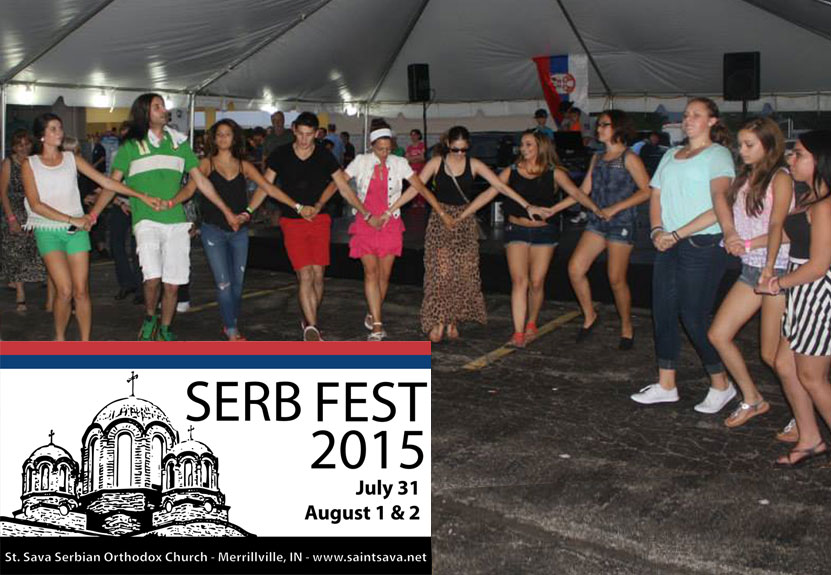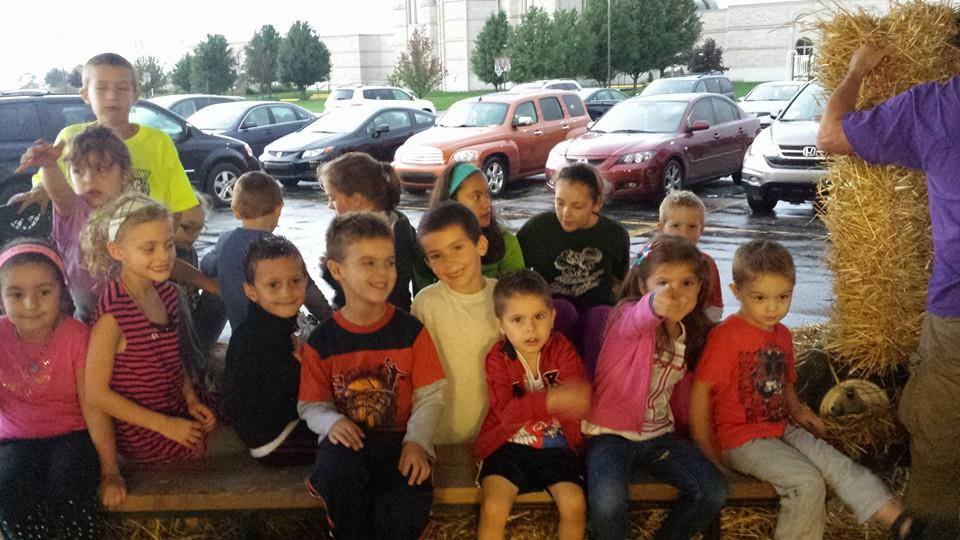
3 Days, 16 Acts, more than 48 Hours of Live Performances – it’s part of the core of what Serb Fest is all about – music, singing, and dancing. From the contemporary sounds of the modern DJ to the traditional tones of the plucked tamburica, you’ll experience a dynamic range of cultural music and dance at St. Sava Serb Fest 2015.
In addition to all of the amazing food and baked goods at St. Sava Serb Fest, our musical and entertainment offerings are a critical part of the cultural experience. Let’s face it, we love to sing and dance!
Check out the complete daily schedule at https://www.saintsava.net/serb-fest/ to see who is playing and when each day of the fest.
With musical acts playing simultaneously throughout nearly all of the fest, you’ll never know exactly where a Kolo dance may spontaneously begin. One thing is certain, you’ll know it when it happens and you’ll probably want to join in the fun!
About the Kolo
The Kolo is danced primarily by people from Bosnia and Herzegovina, Bulgaria, Croatia, Macedonia, Montenegro, Serbia and Bela Krajina region of Slovenia. It is performed among groups of people holding each other’s hands or having their hands around each other’s waists (ideally in a circle, hence the name).
The basic steps are easy to learn, but experienced dancers dance Kolo with great virtuosity due to different ornamental elements they add, such as syncopated steps. Each region has at least one unique kolo; it is difficult to master the dance and even most experienced dancers cannot master all of them.
The dance is accompanied by instrumental two-beat music (bearing the same name), performed most often with an accordion, but also with other instruments: frula (traditional kind of a recorder), tamburica, or šargija.
Many variations of Kolo are normally performed at weddings, social, cultural, and religious ceremonies. Kolo may be performed in a closed circle, a single chain or in two parallel lines. Both men and women dance together, however some dances require only men to dance and some dances are only for women.
The music is generally fast paced and contains tricky steps. Kolo costumes vary from region to region, but Bosnian and Serbian dance costumes typically are the most similar to each other. Men wear a cap, loose blouse tucked in to trousers that balloon around the thighs and then tightening from the knee down to the ankle.
Women wear long white embroidered dresses with very heavy velvet aprons tied at the waist. Both the dress and apron are embroidered with bright flowers to enhance the females outfit. Generally, both men and women wear embroidered velvet vests. One of the most interesting components of the kolo costume are the shoes. The shoes are called Opanci which are made from cured pig skin that is molded to fit the dancers foot.
St. Sava Children’s Folklore Group and Children’s Choir
St. Sava has a children’s Folklore group who will be performing Saturday and again on Sunday. The kids will be in their traditional costumes. After the dance performance, our St. Sava Children’s Choir will take the stage to entertain us with several beautiful songs.
Visit https://www.saintsava.net/serb-fest/ to see the exact times the children’s folklore group and choir will be taking the stage.
The children will also perform a mock Serbian wedding. Be sure to stop by our museum over the weekend to check out the wonderful display “Serbian Weddings” open to the public throughout the fest.
More Serb Fest 2015 Preview Articles
Visit the St. Sava website www.saintsava.net/serb-fest to see other Serb Fest Previews including, “Inside the Famous Serbian Bake Sale” and “Who are the Lamb Guys?” for a special look at the St. Sava Serb Fest 2015, taking place July 31, August 1 & 2 in Merrillville, IN.
[images picture_size=”fixed” autoplay=”yes” columns=”1″ column_spacing=”13″ scroll_items=”” show_nav=”yes” mouse_scroll=”no” border=”yes” lightbox=”yes” class=”” id=””] [image link=”” linktarget=”_self” image=”https://www.saintsava.net/wp-content/uploads/2015/07/10593161_686754468069024_398814639835850078_n.jpg” alt=””] [image link=”” linktarget=”_self” image=”https://www.saintsava.net/wp-content/uploads/2015/07/15649_686754461402358_8505985531158158197_n.jpg” alt=””] [image link=”” linktarget=”_self” image=”https://www.saintsava.net/wp-content/uploads/2015/07/10253921_686755104735627_6070684626594146119_n.jpg” alt=””] [image link=”” linktarget=”_self” image=”https://www.saintsava.net/wp-content/uploads/2015/07/10577072_686753844735753_5268588826339738427_n.jpg” alt=””] [image link=”” linktarget=”_self” image=”https://www.saintsava.net/wp-content/uploads/2015/07/10686604_780421535368983_8024081706264087482_n.jpg” alt=””] [image link=”” linktarget=”_self” image=”https://www.saintsava.net/wp-content/uploads/2015/07/10929958_780421372035666_5715976508253304687_n.jpg” alt=””] [image link=”” linktarget=”_self” image=”https://www.saintsava.net/wp-content/uploads/2015/07/10527421_686499141427890_658080093327505259_n.jpg” alt=””] [/images]
